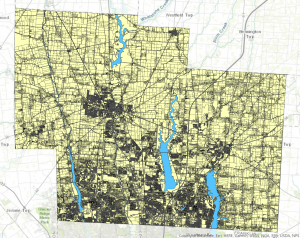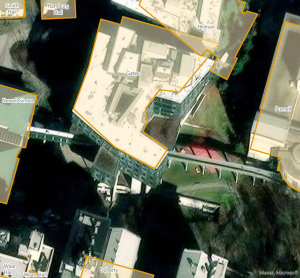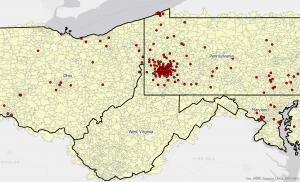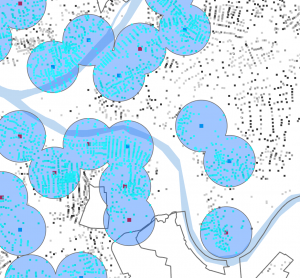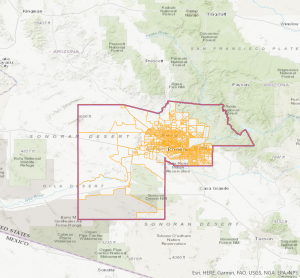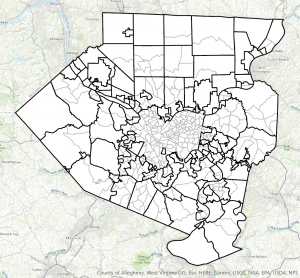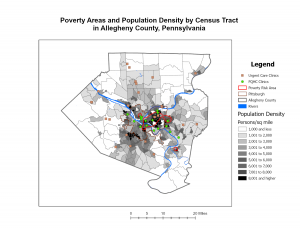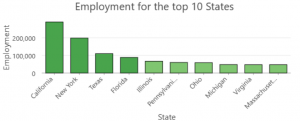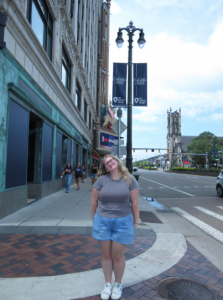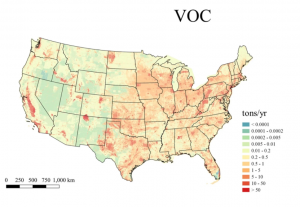This week, I read chapters 1, 2, and 3 of the Esri Guide to GIS Analysis. Here are some of my key takeaways from each chapter:
Chapter 1: The general idea of GIS is to look at geographical patterns in your data and their relationships, and that can involve just a few steps or very many. When starting your process, you first must ask a question. The more specific your question is, the easier it will be to decide how to continue with your process. This chapter dives into the different ways to represent geographic features, discrete, continuous phenomena, and is summarized by area, along with when to use each feature with appropriate examples. We also learn the 2 different ways of representing geographical features: vector and raster. With vector, each feature is a row in a table, and feature shapes are defined by x,y locations in space, and features can be events, locations, lines, or areas. With the raster model, features are represented as a group of cells in the same space continuously, with each layer representing one attribute. This chapter does offer a warning when we are using coordinates when mapping. This chapter warns us to check all of our data to make sure all of the data is in the same coordinate system and map projection. The rest of the chapter talks about the understanding of different geographic attributes, and provides examples of when to use each, each with its own visual.
Chapter 2: This chapter begins by reinforcing the importance of geographic coordinates and why they are important for GIS. Along with reminding us that if our data already has geographical coordinates, we do not need to add any, but if our data does not, we will need to have location information, such as a street address or latitude/longitude values. The GIS will then read these and assign geographic coordinates. We also learn that even if we map our data as a single type, all data represented with the same symbol, there is still the possibility that we can further explore our map. We also learn how GIS works when creating maps; for individual locations GIS draws a symbol at the point defined by the coordinates for each address, but for linear features GIS draws lines to connect the points that define the shape of each street, and for areas such as parcels of land the GIS draws their outlines or fills them in with a color or pattern. Mapping features by category also allows us to better read our map and be able to differentiate between different subsets of categories (i.e., which roads are city/federal/highways). When mapping, we must also make sure we are keeping things to scale. To make our maps easier to read, for ourselves and others, it’s helpful to include familiar landmarks/geographical things. The patterns we see on our map can be either totally random or planned and have some correlation to one another. In order to find the pattern, if we suspect there is one, we must complete a statistical analysis with our data.
Chapter 3: This chapter talks about mapping most and least quantities and how to determine how to present the quantities. Mapping most and least is important, not only because it tells us where the most and least of a certain criteria is, but it also adds additional information that can be useful for businesses and cities. When making and presenting our map, we must always keep our audience in mind to make sure we’re providing the information needed, no more and no less. With mapping quantities, we need to know first if we are mapping counts and amounts or ratios, because depending on that, we will choose how to present our data. However, when our data cannot be represented to the best of our ability with numbers, we can use ranks to sort and represent our data. To make our maps, we should present our data within different classes. Classes should be assigned by similar values within our data, and the values between our ranges should be as large as we can make them without removing any of our data. We must create these ranges manually. When picking a classification scheme to use, first, we need to know how our data is distributed across the range. To do this, we can make a bar graph of our data, and then, based on these graphs, decide how to classify them. Whenever we create a map, we want to make sure that those who are not skilled in GIS know what they are reading and what our map is trying to represent. This chapter also provides a list of map types to use based on our data. It also tells us when to use. If our map presents the information clearly, we can compare different parts of the map to see where the highest and lowest values are. And by looking at the transition between where the least and most are, it can give you further insight into relationships between places.
Key Words: Discrete Features (actual location can be pinpointed), Continuous Phenomena (can be found or measured anywhere), Clustered Distribution (features are more likely to be found near other features), Uniform Distribution (features are less likely to be found near other features), Random Distribution (features are equally likely to be found at any given location)
